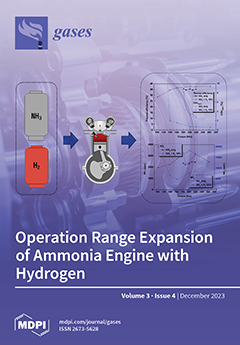The maritime industry is recognized as a major pollution source to the environment. The use of low- or zero-carbon marine alternative fuel is a promising measure to reduce emissions of greenhouse gases and toxic pollutants, leading to net-zero carbon emissions by 2050. Hydrogen
[...] Read more.
The maritime industry is recognized as a major pollution source to the environment. The use of low- or zero-carbon marine alternative fuel is a promising measure to reduce emissions of greenhouse gases and toxic pollutants, leading to net-zero carbon emissions by 2050. Hydrogen (H
2), fuel cells particularly proton exchange membrane fuel cell (PEMFC), and ammonia (NH
3) are screened out to be the feasible marine gaseous alternative fuels. Green hydrogen can reduce the highest carbon emission, which might amount to 100% among those 5 types of hydrogen. The main hurdles to the development of H
2 as a marine alternative fuel include its robust and energy-consuming cryogenic storage system, highly explosive characteristics, economic transportation issues, etc. It is anticipated that fossil fuel used for 35% of vehicles such as marine vessels, automobiles, or airplanes will be replaced with hydrogen fuel in Europe by 2040. Combustible NH
3 can be either burned directly or blended with H
2 or CH
4 to form fuel mixtures. In addition, ammonia is an excellent H
2 carrier to facilitate its production, storage, transportation, and usage. The replacement of promising alternative fuels can move the marine industry toward decarbonization emissions by 2050.
Full article



